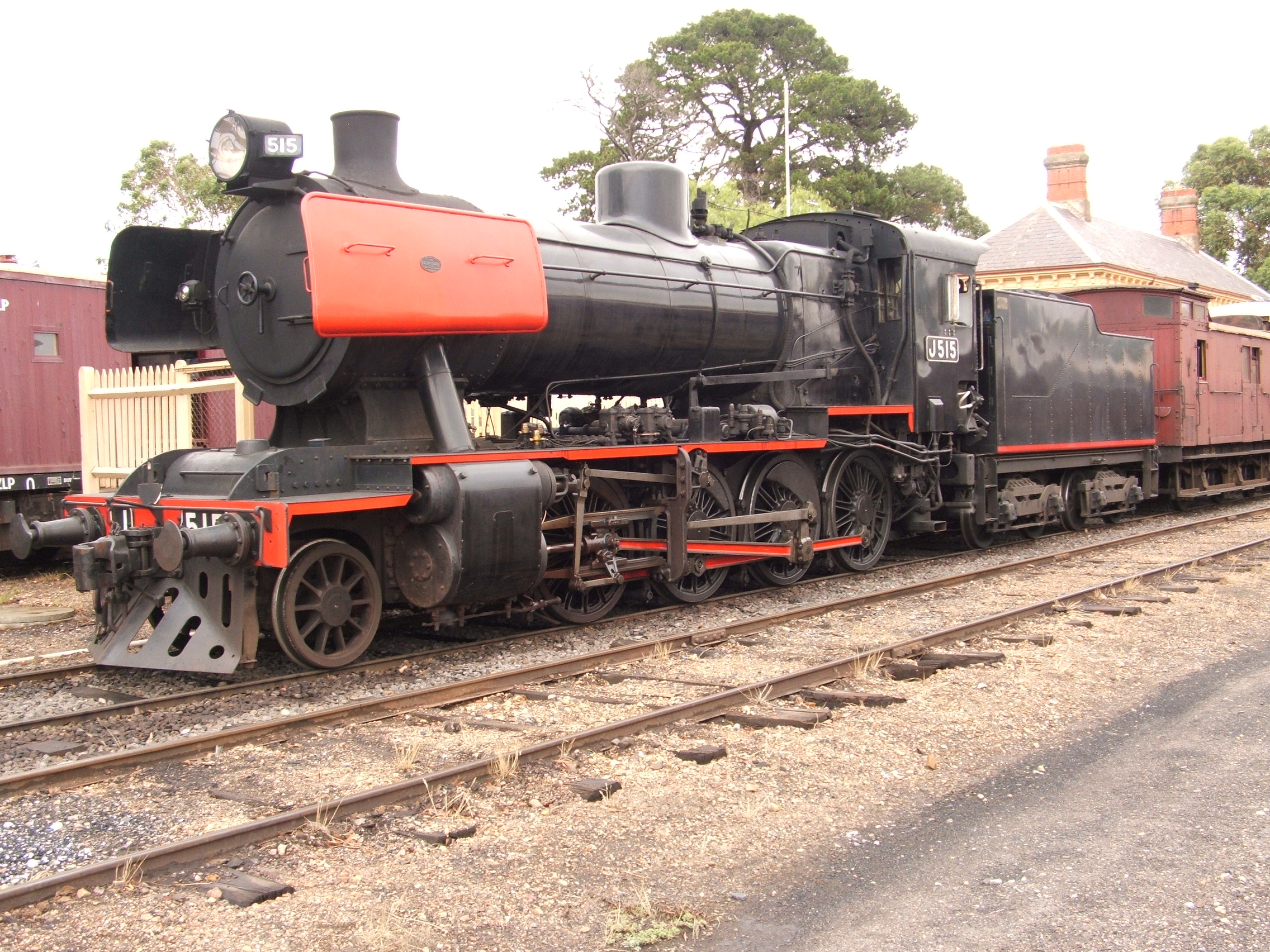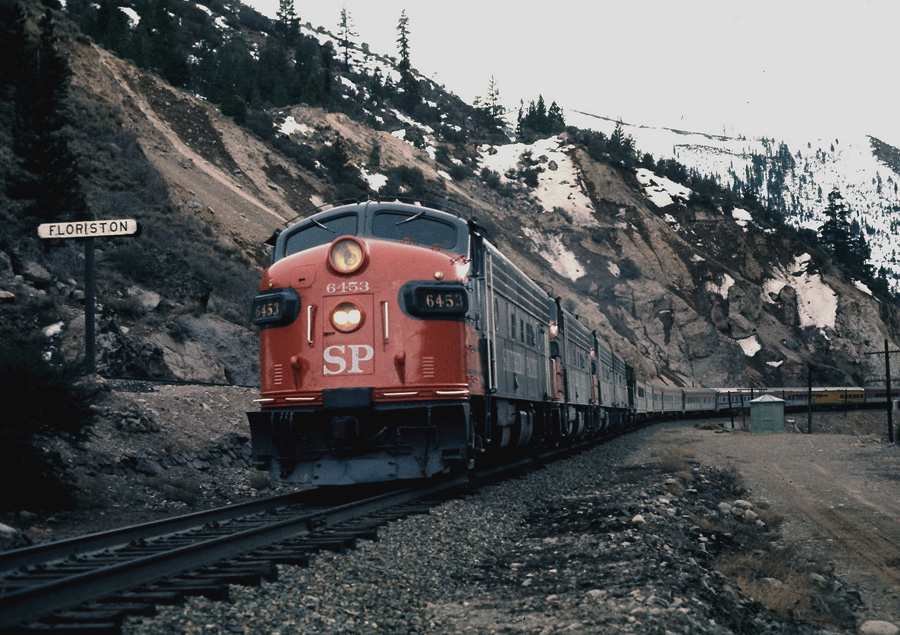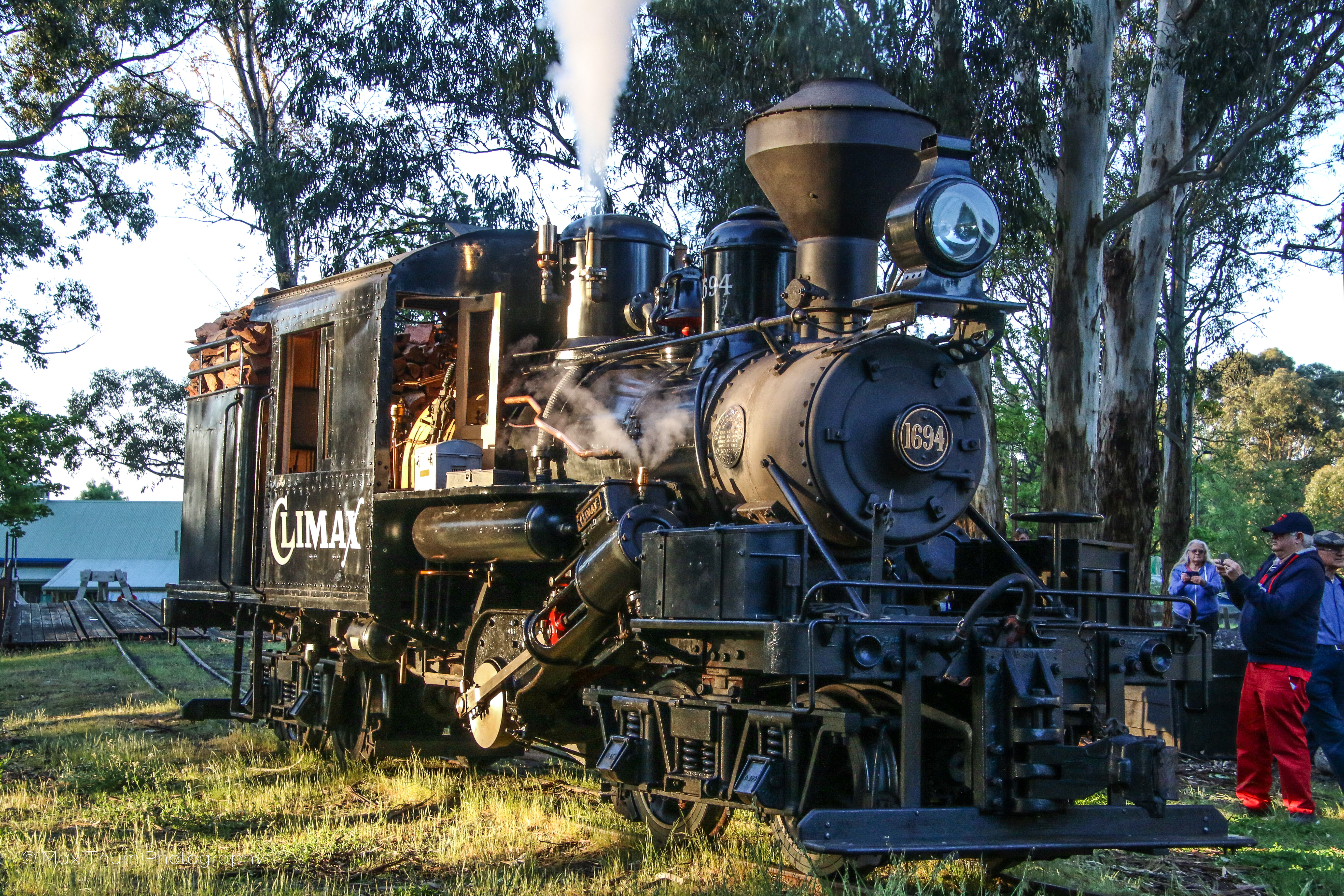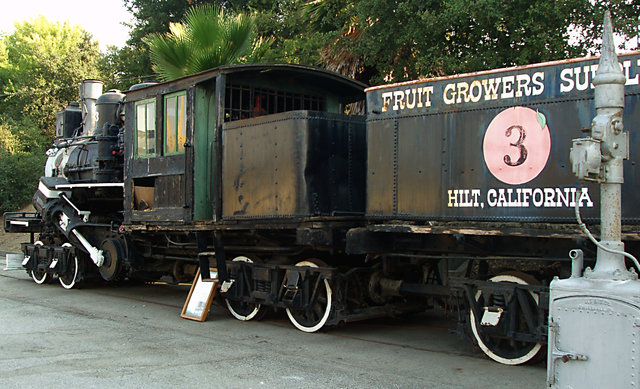|
RailGiants Train Museum
RailGiants Train Museum is a railroad museum of historic trains located at the Fairplex in Pomona, California, United States. The museum was closed indefinitely in March 2020 as a result of the COVID-19 pandemic, but after renovations, it reopened in May 2022. Collection The collection features historic locomotives which visitors may board. The museum also features a historic train station, a library, and a collection of railway memorabilia. Currently, entry to the museum is free and open to the public on the second weekend of each month. A notable locomotive in the collection is the Union Pacific 4014, which was on display at the museum until 2014, when it was moved for restoration. The museum was featured in ''Visiting... with Huell Howser'' along with Kidsongs Boppin with the Biggles songs, Little red caboose & The Locomotion Episode 1015. Displayed Locomotives See also *List of railway museums A railway museum is a museum that explores the history of all aspects o ... [...More Info...] [...Related Items...] OR: [Wikipedia] [Google] [Baidu] |
Union Pacific Big Boy
The Union Pacific Big Boy is a type of simple articulated 4-8-8-4 steam locomotive manufactured by the American Locomotive Company (ALCO) between 1941 and 1944 and operated by the Union Pacific Railroad in revenue service until 1962. The 25 Big Boy locomotives were built to haul freight over the Wasatch Range between Ogden, Utah, and Green River, Wyoming. In the late 1940s, they were reassigned to Cheyenne, Wyoming, where they hauled freight over Sherman Hill to Laramie, Wyoming. They were the only locomotives to use a 4-8-8-4 wheel arrangement: four-wheel leading truck for stability entering curves, two sets of eight driving wheels and a four-wheel trailing truck to support the large firebox. Today, eight Big Boys survive, with most on static display at museums across the USA. One of them, No. 4014, was re-acquired by Union Pacific, and between 2014 to 2019 it was rebuilt to operating condition for the 150th anniversary of the first transcontinental railroad. It thus regained ... [...More Info...] [...Related Items...] OR: [Wikipedia] [Google] [Baidu] |
2-8-0
Under the Whyte notation for the classification of steam locomotives, represents the wheel arrangement of two leading wheels on one axle, usually in a leading truck, eight powered and coupled driving wheels on four axles, and no trailing wheels. In the United States and elsewhere, this wheel arrangement is commonly known as a Consolidation, after the Lehigh and Mahanoy Railroad’s ''Consolidation'', the name of the first 2-8-0.White, John H. Jr. (1968). ''A history of the American locomotive; its development: 1830-1880''. New York: Dover Publications, p. 65. The notation 2-8-0T indicates a tank locomotive of this wheel arrangement, the "T" suffix indicating a locomotive on which the water is carried in side-tanks mounted on the engine rather than in an attached tender. The Consolidation represented a notable advance in locomotive power. After 1875, it became "the most popular type of freight locomotive in the United States and was built in greater quantities than any other si ... [...More Info...] [...Related Items...] OR: [Wikipedia] [Google] [Baidu] |
Southern Pacific 5021
Southern Pacific 5021 is an SP-2 class 4-10-2 steam locomotive built in 1926 by ALCO at their Schenectady, New York, shops. It is the only member of this class of SP locomotives to be preserved, and it is one of only five three-cylinder locomotives preserved in North America. History The locomotive was built in 1926 by the American Locomotive Company, it was designed to haul mixed freight and passenger trains over the Sierra Nevada range between northern California and Nevada. Later in its career, No. 5021 was shifted to service in Oregon, where it remained until its retirement in 1955. Southern Pacific donated No. 5021 to the Railway and Locomotive Historical Society on March 8, 1956. In 1961, it was fired up and used for operation on the museum's spur line. However, the Southern Pacific did not like this, so they were forced to pull the tracks in 1963. Following this, No. 5021 was stored in the roundhouse of the Atchison, Topeka and Santa Fe Railway. While it was stored, a ... [...More Info...] [...Related Items...] OR: [Wikipedia] [Google] [Baidu] |
Southern Pacific Transportation Company
The Southern Pacific (or Espee from the railroad initials- SP) was an American Class I railroad network that existed from 1865 to 1996 and operated largely in the Western United States. The system was operated by various companies under the names Southern Pacific Railroad, Southern Pacific Company and Southern Pacific Transportation Company. The original Southern Pacific began in 1865 as a land holding company. The last incarnation of the Southern Pacific, the Southern Pacific Transportation Company, was founded in 1969 and assumed control of the Southern Pacific system. The Southern Pacific Transportation Company was acquired in 1996 by the Union Pacific Corporation and merged with their Union Pacific Railroad. The Southern Pacific legacy founded hospitals in San Francisco, Tucson, and Houston. In the 1970s, it also founded a telecommunications network with a state-of-the-art microwave and fiber optic backbone. This telecommunications network became part of Sprint, a compa ... [...More Info...] [...Related Items...] OR: [Wikipedia] [Google] [Baidu] |
4-6-4
Under the Whyte notation for the classification of locomotives, represents the wheel arrangement of four leading wheels, six powered and coupled driving wheels and four trailing wheels. In France where the type was first used, it is known as the Baltic while it became known as the Hudson in most of North America. Overview Tender locomotives The 4-6-4 tender locomotive was first introduced in 1911 and throughout the 1920s to 1940s, the wheel arrangement was widely used in North America and to a lesser extent in the rest of the world. The type combined the basic design principles of the 4-6-2 type with an improved boiler and larger firebox that necessitated additional support at the rear of the locomotive. In general, the available tractive effort differed little from that of the 4-6-2, but the steam-raising ability was increased, giving more power at speed. The 4-6-4 was best suited to high-speed running across flat terrain. Since the type had fewer driving wheels than carryin ... [...More Info...] [...Related Items...] OR: [Wikipedia] [Google] [Baidu] |
Santa Fe Class 3450
The Santa Fe class 3450 consisted of ten 4-6-4 "Hudson" type steam locomotives built by the Baldwin Locomotive Works in 1927. Built as coal-burners, they were later converted to oil-burning during the 1930s. At the same time, the locomotives were given driving wheels instead of their original , and the boiler pressures increased from . Combined, these changes reduced the starting tractive effort from , but increased the top speed and efficiency. Their early service was in the Midwest, between Chicago and Colorado; later, some were assigned to service in the San Joaquin Valley of California between Bakersfield and Oakland. They were smaller and less powerful locomotives than the later 3460 class "Hudson" type, but were capable of equivalently high speeds. The first locomotive built, No. 3450, was donated by the Santa Fe in 1955 to the Railway & Locomotive Historical Society's Southern California chapter, and is preserved at the Society's museum in the Los Angeles County Fair gro ... [...More Info...] [...Related Items...] OR: [Wikipedia] [Google] [Baidu] |
Fruit Growers Supply
In botany, a fruit is the seed-bearing structure in flowering plants that is formed from the ovary after flowering. Fruits are the means by which flowering plants (also known as angiosperms) disseminate their seeds. Edible fruits in particular have long propagated using the movements of humans and animals in a symbiotic relationship that is the means for seed dispersal for the one group and nutrition for the other; in fact, humans and many animals have become dependent on fruits as a source of food. Consequently, fruits account for a substantial fraction of the world's agricultural output, and some (such as the apple and the pomegranate) have acquired extensive cultural and symbolic meanings. In common language usage, "fruit" normally means the seed-associated fleshy structures (or produce) of plants that typically are sweet or sour and edible in the raw state, such as apples, bananas, grapes, lemons, oranges, and strawberries. In botanical usage, the term "fruit" also include ... [...More Info...] [...Related Items...] OR: [Wikipedia] [Google] [Baidu] |
Northern California Lumber Company
Northern may refer to the following: Geography * North, a point in direction * Northern Europe, the northern part or region of Europe * Northern Highland, a region of Wisconsin, United States * Northern Province, Sri Lanka * Northern Range, a range of hills in Trinidad Schools * Northern Collegiate Institute and Vocational School (NCIVS), a school in Sarnia, Canada * Northern Secondary School, Toronto, Canada * Northern Secondary School (Sturgeon Falls), Ontario, Canada * Northern University (other), various institutions * Northern Guilford High School, a public high school in Greensboro, North Carolina Companies * Arriva Rail North, a former train operating company in northern England * Northern Bank, commercial bank in Northern Ireland * Northern Foods, based in Leeds, England * Northern Pictures, an Australian-based television production company * Northern Rail, a former train operating company in northern England * Northern Railway of Canada, a defunct railway in On ... [...More Info...] [...Related Items...] OR: [Wikipedia] [Google] [Baidu] |
Climax Locomotive
A Climax locomotive is a type of geared steam locomotive built by the ''Climax Manufacturing Company'' (later renamed to the ''Climax Locomotive Works''), of Corry, Pennsylvania. These had two steam cylinders attached to a Transmission (mechanics), transmission located under the center of the boiler, which sent power to driveshafts running to the front and rear bogie, trucks. Some 1000-1100 were built in three classes - A, B, and C - between 1888 and 1928. Invention and production The invention of the Climax locomotive is attributed to Charles D. Scott, who ran a forest railway near Spartansburg, Pennsylvania between 1875 and 1878. A lumberjack of considerable mechanical ingenuity, Scott sought to bring an improved logging locomotive of his own design to market and brought the drawings to the nearby Climax Manufacturing Company in Corry, Pennsylvania. The first four Climax locomotives were built and delivered in 1888. The design patentGeorge D.Gilbert, Proppeling gear for tr ... [...More Info...] [...Related Items...] OR: [Wikipedia] [Google] [Baidu] |
Climax Locomotive Works
The Climax Locomotive Works (formerly the Climax Manufacturing Company) was a manufacturer of Climax geared steam locomotives between 1888 and 1928. It was based in Corry, Pennsylvania. In fiction * Ferdinand is based on the Climax Locomotive Class in Thomas and Friends ''Thomas & Friends'' (originally known as ''Thomas the Tank Engine & Friends'' and later ''Thomas & Friends: Big World! Big Adventures!'') is a British children's television series that aired across 24 series from 1984 to 2021. Based on ''The ... Misty Island Rescue. Defunct locomotive manufacturers of the United States Industrial buildings and structures in Pennsylvania Corry, Pennsylvania {{steam-loco-stub ... [...More Info...] [...Related Items...] OR: [Wikipedia] [Google] [Baidu] |
Fruit Growers Supply Company
In botany, a fruit is the seed-bearing structure in flowering plants that is formed from the ovary after flowering. Fruits are the means by which flowering plants (also known as angiosperms) disseminate their seeds. Edible fruits in particular have long propagated using the movements of humans and animals in a symbiotic relationship that is the means for seed dispersal for the one group and nutrition for the other; in fact, humans and many animals have become dependent on fruits as a source of food. Consequently, fruits account for a substantial fraction of the world's agricultural output, and some (such as the apple and the pomegranate) have acquired extensive cultural and symbolic meanings. In common language usage, "fruit" normally means the seed-associated fleshy structures (or produce) of plants that typically are sweet or sour and edible in the raw state, such as apples, bananas, grapes, lemons, oranges, and strawberries. In botanical usage, the term "fruit" also include ... [...More Info...] [...Related Items...] OR: [Wikipedia] [Google] [Baidu] |
Phelps Dodge
Phelps Dodge Corporation was an American mining company founded in 1834 as an import-export firm by Anson Greene Phelps and his two sons-in-law William Earle Dodge, Sr. and Daniel James. The latter two ran Phelps, James & Co., the part of the organization based in Liverpool, England. The import-export firm at first exported United States cotton from the Deep South to England and imported various metals to the US needed for industrialization. With the expansion of the Western frontier in North America, the corporation acquired mines and mining companies, including the Copper Queen Mine in Cochise County, Arizona and the Dawson, New Mexico coal mines. It operated its own mines and acquired railroads to carry its products. By the late 19th century, it was known as a mining company. On March 19, 2007, Freeport-McMoRan completed a $25.9 billion acquisition of Phelps Dodge Corporation. History in 1821, Anson G. Phelps started a partnership in New York City with Elisha Peck, a mer ... [...More Info...] [...Related Items...] OR: [Wikipedia] [Google] [Baidu] |






